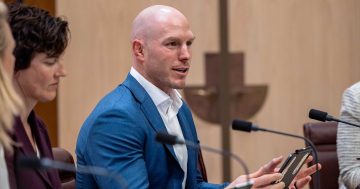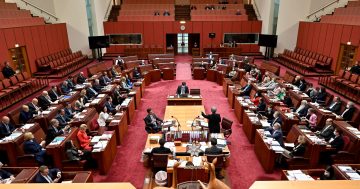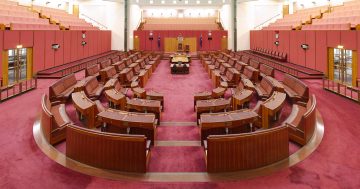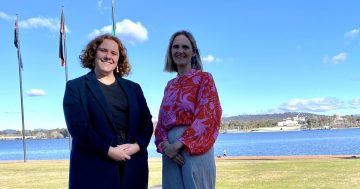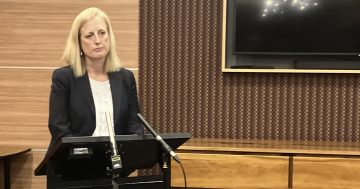
The Australian Senate. Photo: JJ Harrison.
On 7 August, 1974, the result came through. The bill had passed both houses of Parliament and Australia’s two territories would each receive two seats in the Senate.
Nearly 48 years later, the first independent candidate from the ACT was elected to the Senate. Rugby union player turned politician David Pocock delivered his maiden speech to the Senate on Tuesday, 2 August.
Among other things, he argued for more “equitable representation”.
“Yes, we are a city of roundabouts and politicians,” he said. “But we’re also much more than that. We’re the nation’s capital. I want this to once again be a source of great pride. No longer are we a safe seat.”
From the beginning, it was thought the ACT’s presence in the Senate would only ever consist of one Liberal and one Labor candidate. Pocock’s win blew this out of the water.
So is it time the ACT received two more seats?
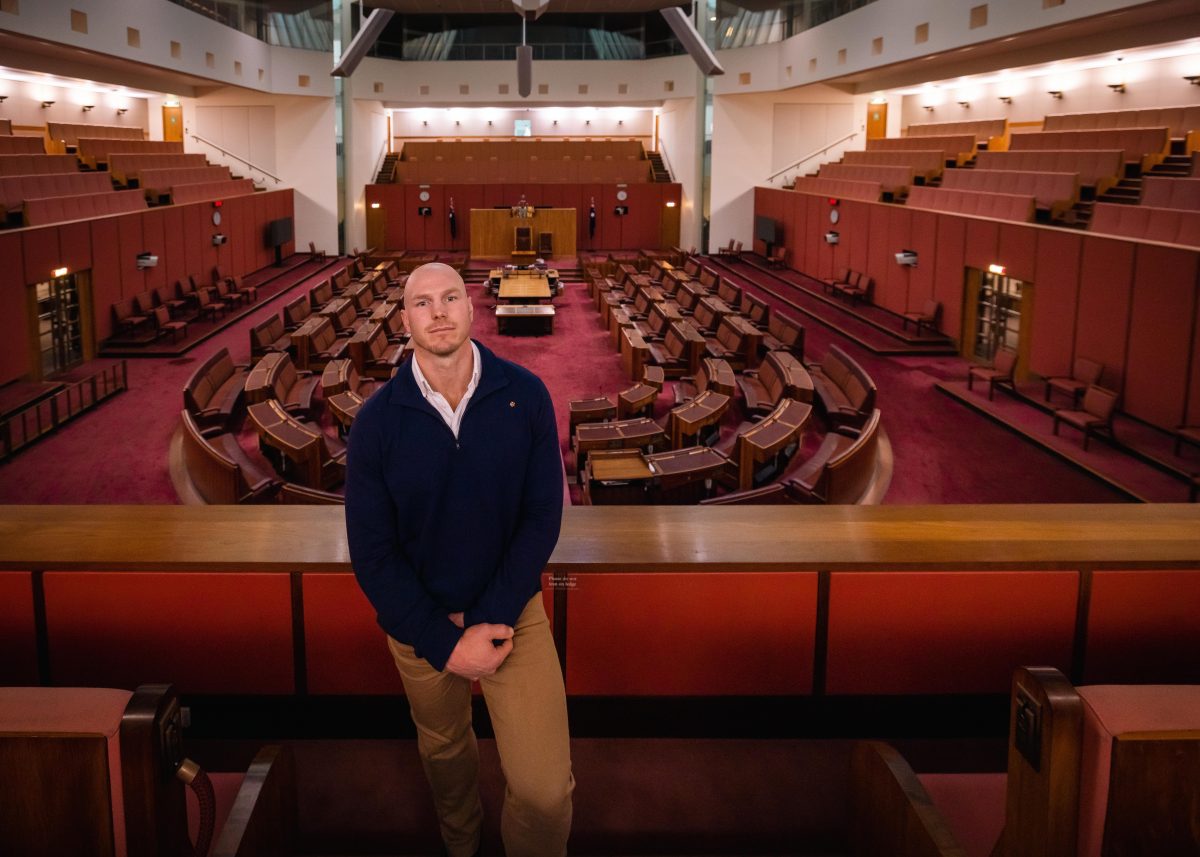
David Pocock makes history in May as he becomes the first independent candidate from the ACT in the Senate. Photo: Lincoln Magee.
Gary Humphries sat in one of the seats for the Liberal Party between 2003 to 2013 and is now writing a thesis at the Australian National University (ANU) on the history of the ACT’s self-government. He says the ACT is “grossly under-represented” in the House of Representatives and the Senate when compared with the smaller populace of Tasmania, but over-represented when it comes to NSW.
The Australian Constitution designates 12 Senate seats to each of Australia’s states. The minimum number is six. But the debate is much larger than just popping in two more chairs.
Right from the start in 1973, Prime Minister Gough Whitlam announced plans to give senators to the Northern Territory and the ACT.
The bill passed but it wasn’t happily ever after yet.

Prime Minister Gough Whitlam on the day of the dismissal. Photo: File.
“It was challenged in the High Court by the Coalition which said the Federal Parliament had no power to legislate for Territory senators. But the High Court disagreed.”
And so the Senate (Representation of Territories) Act 1973 (Cth) was locked in.
Mr Humphries says it has been assumed ever since that two senators are “about the right amount”.
“There was sort of unspoken acceptance that while the House might swing more towards one party than the other, Labor and Liberal would each hold an ACT Senate seat and it wouldn’t upset the balance too much,” he says.
“But it is possible, constitutionally, for the Parliament to enlarge Senate representation on the basis there has been some lag in representation for the territories.”
Two more senators for each of the territories would grow the number of seats from 76 to 80. But according to Section 24 of the Constitution, this would mean the House of Representatives would also need to grow from 152 to 160.
Commonly called the “nexus provision”, this states “the number of members of the House of Representatives must be twice the number of senators, or as near as practicable”. It was included to prevent the House becoming disproportionately larger than the Senate.
“That may be a bridge too far for the government,” Mr Humphries says.
But he says Pocock and the Labor Party stand to benefit.
“Pocock is almost guaranteed to win one of the four every time, while the Labor Party would see itself well placed to get two of those seats, with the other going to the Liberals or The Greens.”
Labor has held a seat since the first ACT Senate election in 1975, with a dynasty started by Susan Ryan, then Bob McMullan, Kate Lundy, Katy Gallagher, David Smith and now Katy Gallagher again. John Knight, Margaret Reid, Gary Humphries and Zed Seselja represented the Liberals over the same time period. At least until Pocock nudged out Seselja at the May 2022 election.
“The problem is their opponents may paint them as creating more politicians across the board which, of course, it is,” Mr Humphries says.
Overall, he says an increased number of senators certainly stands a good chance under the current government.
“It doesn’t need any special requirements, it just needs to be agreed on by both houses.”












